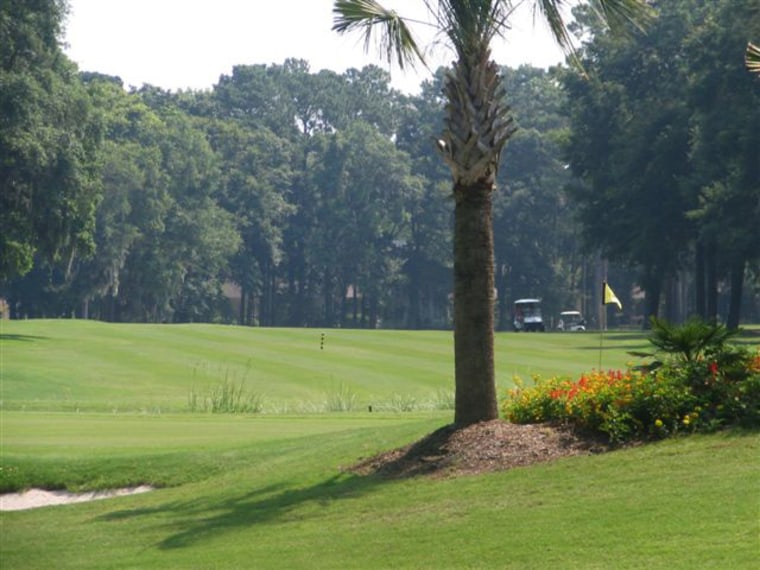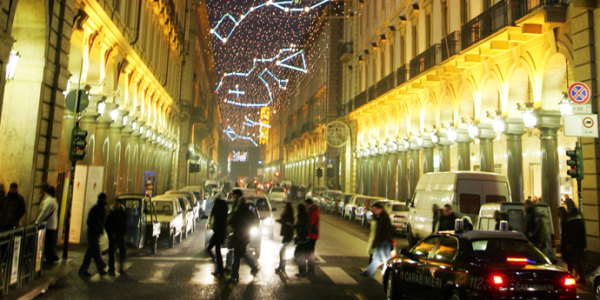Italy isn’t a place that immediately springs to mind when thinking of great, global golf destinations. When most Americans think of Italy, they probably conjure images of the Roman Empire, wine, pizza, beautiful, olive-skinned women and great loafers, not necessarily in that order.
The Italian government is hoping to make a small dent in that mentality, trying to lure golfers, as have other countries recently bent on attracting the type of American and European tourists who spend money, not free-loading back-packers.
The country does have excellent, if not world-renowned, golf, with courses designed by Jack Nicklaus, Arnold Palmer, Robert Trent Jones, Pete Dye and Robert von Hagge, to name a few. Club Roma "Acquasanta" is the oldest, built in 1903, and some of the layouts have dramatic, historical backdrops, like Roman aqueducts and ancient villas.
Northern Italians speak of their fellow countrymen to the south in sympathetic, but slightly condescending terms: they are poor, and we don’t mind helping them out, but come on, enough is enough.
That extends to golf, especially in the northern regions of Tuscany, Piedmont, Lombardia, Emilia Romagna and Veneto, where well-conditioned 18-hole courses are within short drives of one another.
Italian tourism officials are now highlighting the region of Friuli Venezia Giulia, at the far end of northeast Italy, hoping to get the region a piece of the action. It is indeed, a very scenic region, with snow-covered mountains to the north, the Tagliamento River to the south and the coast of the Adriatic Sea to the east.
Slideshow 10 photos
Italian dreams
Like most of northern Italy, the region is exceptionally clean, with great roads and well-marked signs. The countryside is rolling, with vast corn fields and vineyards: the region is famous for its wines (and curiously, ham) and even your normal, everyday Italian is likely to have a small vineyard in his back yard.
You drive through small towns that wreak with history: the little town of Cividale was founded by Julius Caesar, for Christ’s sake, and names like Charlemagne and Napolean jump out at you. The Visigoths and Huns have come through here on various rape-and-plunder vacations, and a number of Roman monuments still exist in Trieste, the sprawling, beautiful seaport town.
And yes, that huge building that looks like a castle you see as you’re careening down one of the highways is what it appears. They seem to pop out of regular neighborhoods from time to time: some still have royalty living in them.
For people living in a country barely over 200 years old, eating in a castle – they’re sometimes opened to special events like formal dinners – can be an extraordinary event.
And then there is the crown jewel: Venice. Although tourism officials are purposefully excluding Venice from their marketing campaign – like Venice needs marketing – it is only an hour’s train ride from Udine, located roughly in the center of the region.
A visit to Venice is an other-worldly affair. "A realist in Venice would become a romantic, by mere faithfulness to what he saw before him," said the Welsh poet Arthur Symons, and it is true. From the Bridge of Sighs to the Piazza San Marco, you walk through narrow streets with the art and architecture of centuries towering over you and encasing you like a bee entombed in honey. You do, indeed, sigh.
Still, it must be said Friuli Venezia Giulia isn’t exactly a golf hotbed. The courses are hours apart, and the drives, even through a countryside this beautiful can be wearing, excluding Venice, which could never become wearing. So, come here for Venice and the rest of the beautiful countryside, and maybe get in a little golf while you’re here. There are some good courses.
MUST PLAYS
Golf Club Trieste sits atop the Carso plateau, which rises above the seaport town of Trieste, looking like what a beautiful, seaside Italian city should look like. While not particularly long, the course does have some very nice elevation changes, and it’s amazing how they got such lush fairways on suck rocky soil. So rocky, in fact, you may have trouble inserting your tee in some tee boxes. It’s in a beautiful setting, but the lack of sea views is a little disappointing.
Golf and Country Club Tarvisio recently expanded to 18 hole, and was designed by Canadian architect Graham Cooke.
It’s located on the Austrian and Slovenian borders with terrific views of the Alps, a very interesting mountain course with wide fairways and ample greens.
Lignano Golf Club is excellently maintained with a great clubhouse and outdoor patio. It has an open feel despite the many trees, and throws lakes, large bunkers and some moderately undulating greens at you. It’s part of a well-known resort, Lignano Sabbiadoro, and has some interesting Italian homes around the perimeter, and Mt.Cavallo in the background. Site of the 1993 Italian Women’s Open, the course lays between the mouth of the Tagliamento River and the Lagoon of Marano, amidst the Lignano pine woods.
SOLID SECONDS
Golf Club Udine was built in 1973 and also has some elevation changes, though not as much as Trieste. It does have two lakes and a canal that crosses four holes, with birds singing in the Italian countryside spiced up by oaks, wild cherry and alder trees. The course is a well-sculpted, well-groomed layout with big fairways and small greens. On some holes, trees block views of much of the greens.
Golf Club Castel d’Aviano is a funky, little parkland course located at the Villa Poliicreti; built in the 16th century, the structure is also used as a hotel and clubhouse. The nine-hole course is very narrow with a number of blind shots. Look for the glass-enclosed statue of Contessa de Porcia on the ninth hole.
Golf Club Grado overlooks the Lagoon of Grado and consequently has more than a few water hazards to deal with. It’s located on the Tenuta Primero estate.
DINING OUT
Some of the castles around the region are occasionally opened for gala dinners, like Susan’s, Stassoldo, Spessa and Duino , but if you find gala dinners lacking, try Osteria d’Italia/Enoteca de Feo and Al Vecchio Stallo restaurants in Udine and Al Bagatto in Trieste.
STAY AND PLAY
Best to stay out of Venice as far as lodging goes – it’s very expensive and far from the golf courses mentioned – and just take the train in. The Astoria Hotel is a business hotel in the middle of Udine, but a tad expensive. Hotel Europa, also in Udine, is a pleasant hotel near the train station, with the quietest rooms in the back by the courtyard.
If you go
Consorzio Promozione Turista del Tarvisiano
Web site: www.tarvisiano.orgPhone: (39) 0428-2135
Any opinions expressed above are those of the writer and do not necessarily represent the views of the management. The information in this story was accurate at the time of publication. All contact information, directions and prices should be confirmed directly with the golf course or resort before making reservations and/or travel plans.
Our spend a great deal of time traveling from course to course (what a life!). Here’s a selection of their top tips for travelers - where to stay, great restaurants, over-rated destinations, and more!

